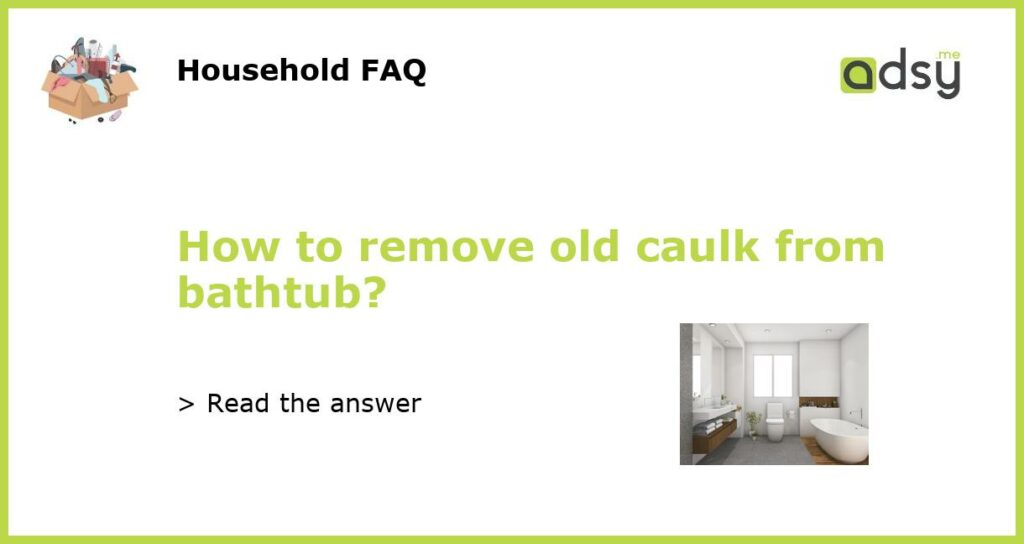Understanding the Importance of Removing Old Caulk
Before diving into the process of removing old caulk from a bathtub, it’s crucial to understand why this task is necessary. Over time, caulk can become dirty, stained, or even develop mold and mildew. By removing the old caulk, you not only improve the appearance of your bathtub but also eliminate any potential health hazards caused by mold growth.
Gather the Required Tools and Materials
To successfully remove old caulk from your bathtub, you’ll need a few essential tools and materials. These include:
- Utility knife or caulk removal tool
- Caulk softener or remover
- Plastic scraper or putty knife
- Clean rags or paper towels
- Rubber gloves
Having these items on hand will make the caulk removal process easier and more efficient.
Softening and Removing the Old Caulk
The first step in removing old caulk from your bathtub is to soften it using a caulk softener or remover. These products are designed to break down the caulk, making it easier to remove. Follow the instructions on the caulk softener or remover packaging to apply the product to the old caulk. This usually involves spraying or brushing the softener onto the caulk and allowing it to sit for a specific amount of time.
Once the caulk has softened, use a utility knife or caulk removal tool to carefully cut and scrape away the old caulk. Be sure to wear rubber gloves to protect your hands during this process. Start at one end of the caulk line and gently guide the tool along the caulk, applying enough pressure to remove the caulk without damaging the bathtub surface. Use a plastic scraper or putty knife to remove any remaining caulk residue.
Cleaning the Surface
After removing the old caulk, it’s essential to thoroughly clean the surface of your bathtub. Use a clean rag or paper towels to wipe away any leftover caulk residue, as well as the caulk softener or remover. Make sure all surfaces are dry before proceeding to the next step.
If there are any stubborn stains or mold and mildew buildup, consider using a bathtub cleaner or a mixture of water and vinegar to scrub the area. Rinse the surface thoroughly with water afterward to remove any cleaning product residue.
Applying New Caulk
Once the bathtub surface is clean and dry, you can proceed with applying new caulk. Before doing so, it’s important to choose the right type of caulk for your bathtub. Silicone caulk is a popular choice for bathtubs, as it is waterproof and flexible.
Cut the tip of the caulk tube at a 45-degree angle, making a small hole for the caulk to come out. Apply a thin and even bead of caulk along the joint or seam you’re sealing, ensuring complete coverage. Use a caulk smoothing tool or your finger to smooth and shape the caulk. Remove any excess caulk before it dries.
Allow the new caulk to dry and cure according to the manufacturer’s instructions before using the bathtub. This usually takes around 24 hours. Once fully cured, the new caulk will provide a watertight seal and improve the overall appearance of your bathtub.






